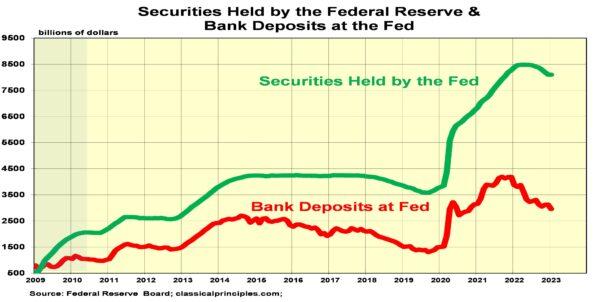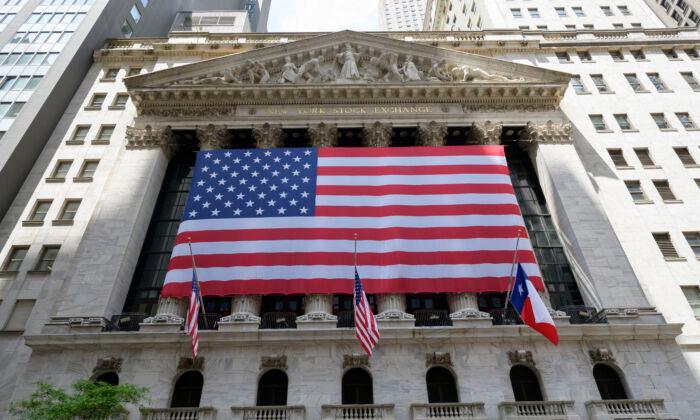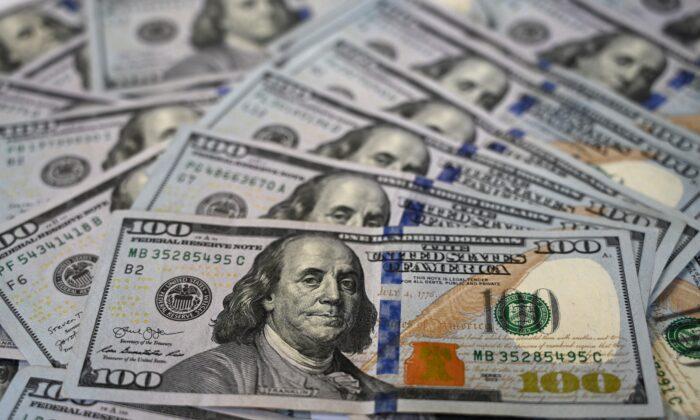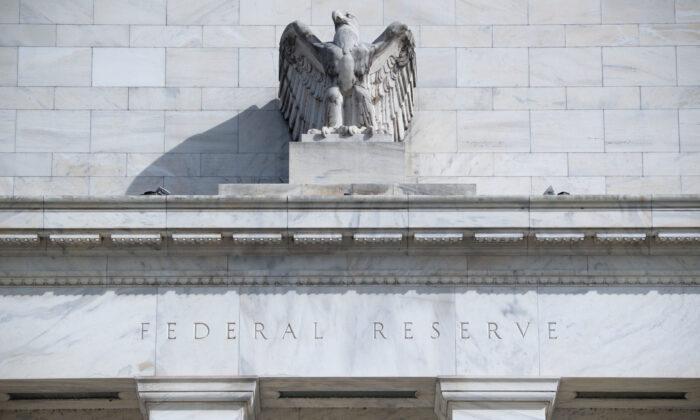December numbers indicate the most widely predicted recession is underway. How serious will it be? The answer will depend in large part on upcoming Federal Reserve policy. If the Fed avoids the mistakes it made in 2008, it will slay the inflation dragon with only a moderate 2–3 percent decline in real output.
Last year, the Fed faced a similar situation to 2007, the year prior to the financial crisis. In 2007, the Fed realized it had created too much money. Inflation had increased to what was considered an intolerable rate of 5 percent. To fight inflation, the Fed stopped increasing a key measure of the money supply.
The key measure is the amount of money added or subtracted from the economy by the Fed’s purchases and sales of securities. In 2007, this was the Fed’s primary mechanism for conducting policy. In the first half of 2007, the Fed slowed its purchases of securities. In the last half of 2007, it sold securities. For the year as a whole, the Fed’s holdings of securities declined by a modest 3 percent. This pattern is remarkably similar to the Fed’s policy in 2022.
Let’s hope that is where the similarity to 2008 ends.
In January 2008, six months after the Fed began selling securities, the economy began to decline. Then-Fed chairman Ben Bernanke was so concerned about economic developments that he called a special meeting of the Fed on Jan. 21, 2008. Excerpts from the transcript of that meeting describe his concerns:
“On the economy, the data and the information that we can glean from financial markets reflect a growing belief that the United States is in for a deep and protracted recession.
“Moreover, as we saw from the global markets today, the concern is rising that that recession will have global consequences.”
Bernanke’s recommended solution:
“I think we have to take a meaningful action—something that will have an important effect. Therefore, I am proposing a cut of 75 basis points. I recognize that this is a very large change. I would not do that if I thought that the size of the cut was inconsistent with our medium-term macroeconomic objectives.”
The Fed’s 75 basis-point reduction brought the Fed’s target rate to 3.5 percent. Fed members assumed the lower rate would stimulate the economy. They were wrong. In an effort to achieve its new 3.5 percent target rate, the Fed began massively selling securities.
By July 2008, the Fed had sold $311 billion, 40 percent of its peak holdings from the previous July. These sales removed a huge amount of funds from the economy. What followed was cascading bankruptcies amid the worst financial crisis since the 1930s. The Fed’s mistake was to drain far too much money from the economy. The Fed did not begin to seriously repurchase securities until February 2009. Four months later, the economy began to recover.
The Fed is currently in a similar situation to where it was in early in early 2008. However, estimating the amount of money entering or leaving the economy no longer depends solely on the Fed’s purchases and sales of securities. Over the past 13 years, the Fed’s purchases of securities have been so great, banks were unable to use all the new money the Fed was attempting to put into the economy. Instead of putting the money into loans and investments, banks accumulated trillions of dollars in deposits at the Fed. These funds represent potential money. Whenever conditions are favorable to banks, they can shift these funds from the Fed’s balance sheet into the economy.
The following chart shows both the Fed’s holdings of securities along with banks deposits at the Federal Reserve. Note how whenever the Fed sharply increased or decreased its purchases of securities, banks then used their deposits at the Fed to mitigate the impact of the Fed’s action. As a result, since 2009, banks have cushioned some of the Fed’s largest attempts to increase or decrease the amount of money in the economy. In doing so, the banks have helped to stabilize what would have been more volatility in liquidity.
The next chart includes the net effect of both the Fed and banks to determine the amount of new liquidity entering the economy. It combines both the Fed purchases or sales of securities with increases in bank deposits at the Fed or decreases, which place money back into the economy.
This liquidity measure shows the huge increase from early 2020 until a peak in June 2022. It then shows a flat to downward trend beginning in July 2022. As we begin 2023, the Fed continues to sell securities as it did at the beginning of 2008. A key difference from 2008 is how banks have shifted their funds from the Fed into the economy.
From June 2022 to Jan. 18, 2023, the Fed sold almost $400 billion in securities, while banks shifted almost $200 from the Fed into the economy. The net effect has been a decline in liquidity of slightly more than $200 billion. While this represents a restrictive policy, it is less restrictive than it would have been without the moves from commercial banks.
Monetary restraint has often impacted the economy with a lag of six to ninemmonths. If the current cycle is typical, the rate of current dollar spending will slow significantly in the first half of this year. Should the Fed continue to sell securities and raise interest rates in the months ahead, monetary restraint will continue through the first half of this year. Normal lags would then leave the economy weak for most of this year.
There are reasons to be hopeful the Fed will not repeat the policy mistakes in 2008. First, since banks continue to hold $3 trillion in deposits at the Fed, they are likely to continue to moderate the impact of the Fed’s security sales.
Second, while the Fed appears to be failing to understand the inflationary impact of excessive purchases of securities, they nevertheless should have a better understanding of the potential for the same power to create a severe downturn. As this downturn progresses, we expect the Fed to moderate and then halt its increases in interest rates and its selling of securities.
Monetary developments in 2008 make it clear that we can never be certain about what the Fed will do. So far, we have avoided the sharp decline in liquidity associated with the financial crisis of 2008–09. If this continues to be the case, we will avoid the severe hardships and financial collapse of that fateful year.







